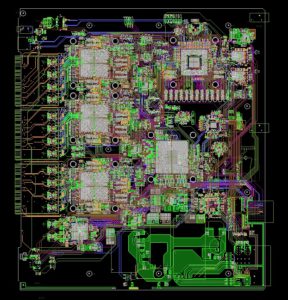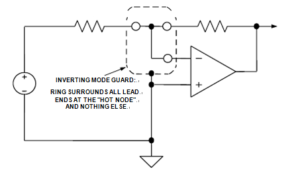Static Printed Circuit Board Effect
Static Printed Circuit Board Effect
If the Printed Circuit Board is already built, you can localize moisture sensitivity to a suspect node with a classic test which can reduce the Static Printed Circuit Board Effect. While observing Printed Circuit Board operation, blow on potential trouble spots through a simple soda straw. The straw focuses the breath’s moisture, which, with the Printed Circuit Board’s salt content in susceptible portions of the design, disrupts circuit operation upon contact.
There are several means of eliminating simple surface leakage problems. Thorough washing of Printed Circuit Boards to remove residues helps considerably. A simple procedure includes vigorously brushing the boards with isopropyl alcohol, followed by thorough washing with deionized water and an 85 degree bake out for a few hours. Be careful when selecting board-washing solvents, though. When cleaned with certain solvents, some water-soluble fluxes create salt deposits, exacerbating the leakage problem.
Unfortunately, if a circuit displays sensitivity to leakage, even the most rigorous cleaning can offer only a temporary solution. Problems soon return upon handling, or exposure to foul atmospheres, and high humidity. Some additional means must be sought to stabilize circuit behavior, such as conformal surface coating.
Fortunately, there is an answer to this, namely guarding, which offers a fairly reliable and permanent solution to the problem of surface leakage. Well-designed guards can eliminate leakage problems, even for circuits exposed to harsh industrial environments.
Two schematics illustrate the basic guarding principle, as applied to typical inverting and noninverting op amp circuits. Below Figure illustrates an inverting mode guard application. In this case, the op amp reference input is grounded, so the guard is a grounded ring surrounding all leads to the inverting input, as noted by the dotted line.



